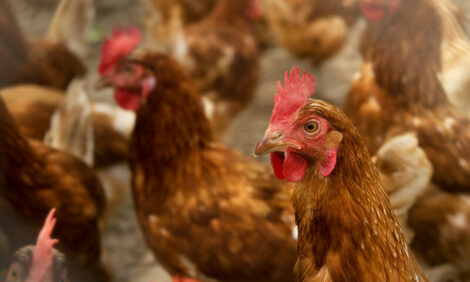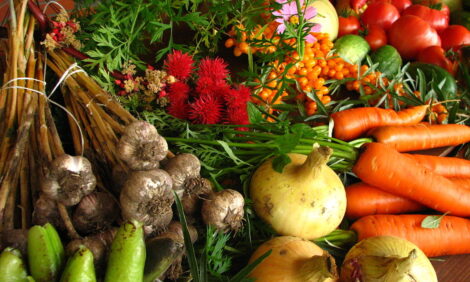



Strong Local Demand Boosts Anhui's Duck Business
CHINA - Higher demand and market prices for ducklings in China boosted the results for Anhui Taiyang Poultry Co. last year, increasing revenue by 44 per cent in US dollar terms.Anhui Taiyang Poultry Co., Inc., a vertically integrated duck breeder, processor and distributor, has announced its financial results for the year ended 31 December 2010.
For the 12 months, revenue increased 44 per cent year-on-year to US$41.7 million. Gross profit rose 119 per cent to $9.2 million, while gross margin was 22 per cent – up from 15 per cent the previous year.
Operating profit increased 39 per cent to $3.9 million.
Adjusted net income (non-GAAP) totalled $7.1 million, while net income increased 73 per cent to $4.3 million, up from $2.5 million in 2009.
Wu Qiyou, Chief Executive Officer and Chairman of the Board of Directors, commented: "2010 was an eventful year for Anhui Poultry as several significant milestones were achieved, while additional growth initiatives were set in motion for 2011 and beyond. Our ability to enact our strategy coupled with the increased industry demand for our duck products and positive pricing trends allowed us to increase revenue 44 per cent to $41.7 million in 2010.
"Our revenue increase was primarily driven by the increase in our Breeding Unit revenue by 63 per cent to $12.6 million and revenue in our Feed Unit to $13.9 million as compared to approximately $51,000 in 2009. During the third and fourth quarters of 2010, the pricing of ducklings hit a historically high price of more than RMB8 or approximately $1.18 per duckling. As a result, we found it more financially beneficial to explore options to sell our ducklings as opposed to raising the ducks to be used for the Food Unit of our business. Thereby revenue in our food business was reduced while increasing the revenue generated through our Breeding Unit. Going forward we will continue to evaluate the industry pricing trends so that we manage our business to maximize our financial results.
"In November 2010 we became a publicly traded company. Through this transaction, we incurred several one-time expenses including stock based compensation of approximately $2.1 million and approximately $894,000 in legal, accounting and professional costs related to going public. Based on these one-time expenses our adjusted net income (non-GAAP) totalled approximately $7.1 million," said Mr Wu.
Revenue for the year ended 31 December 2010 was $41.7 million, an increase of 44 per cent compared to $28.9 million for the previous year. Anhui Poultry raises, processes and markets ducks and duck related food products through three business lines, the Breeding Unit, Feed Unit and Food Unit. During the fiscal 2010 year, Breeding Unit revenue increased 64 per cent to $12.6 million as compared to $7.7 million for the same period the year prior. Feed Unit generated $13.9 million in 2010 compared to approximately $51,000 in 2009. Food Unit revenue decreased 39 per cent to $15.2 million in 2010 as compared to $21.1 million in 2009.
Breeding Unit sales increased in 2010 primarily as a result of higher demand and market prices for ducklings in China. Because the Company generates its own ducklings from its biological assets, the cost of producing new ducklings does not fluctuate with the market selling price for the ducklings. At current industry pricing, the Company can maximize its profits by selling internally generated ducklings directly into the market, as opposed to using them as inputs for Food Unit products. The market price of packaged Food Unit products does not fluctuate immediately with the market price of the input ducklings.
The Feed Unit realized nominal revenue in 2009 as products were primarily used internally by the Breeding Unit. However, in 2010 the Company generated significant revenue through feed products to external customers through one distributor. The Company will attempt to market its feed products to external customers, primarily through feed distributors, in order to maintain revenue from such products.
The Food Unit began its operations in 2008 and showed a significant increase in revenue in 2009 as sales and marketing efforts converted to increased sales. Food Unit sales were down in 2010 as compared with 2009 as a result of the Company's decision to use the ducklings for sale directly to the market due to higher market prices.
Mr Wu added: "In 2010, we made several strategic investments to fuel the future growth of our business. In addition to upgrading our existing breeding facilities on Locations 5, 6 and 7, we began construction on Location 8 in September 2010. Estimated to be completed during the second quarter of 2011, this new facility will cover 166,000 square meters, or 49 acres, with capacity for 100,000 parent ducks. We also intend to enter the ready-to-eat cooked food product industry and intend to begin construction on a new cooked food processing line. Upon completion of the line we will manufacture, market and sell ready-to-eat cooked food products through new and existing distribution channels. In China, demand for these types of products is very high and we expect it to remain so for the foreseeable future. We expect cooked food products to yield higher profit margins than our current products."
Anhui Poultry, founded in 1996, raises, processes and markets ducks and ducks related food products through three business lines. Anhui Poultry specialises in the breeding, hatching and cultivation of ducklings for resale and processing by its food processing unit, production of duck feed for internal use and external sales, and processing of commercial ducks into frozen raw food product for commercial resale. Current production unit capacity includes 100,000 tons of feed, 600,000 parent duck seedlings, 30 million commercial duck seedlings, and processing capacity of 15 million ducks. Strategically located in Ningguo City, Anhui Province, China, Anhui Poultry operates in accordance with European, Japanese and Korean standards and is certified as a pollution-free agricultural product by the national government.
Further Reading
| - | You can view the full report by clicking here. |











